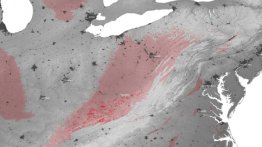Coal

Coal is a combustible sedimentary rock primarily composed of carbon and variable quantities of other elements; chiefly sulfur, hydrogen, oxygen and nitrogen. The amount of heat emitted by coal combustion depends largely on the ratio of carbon, hydrogen and oxygen. The ranking of types of coal is defined by the ratio of carbon to heat-producing energy, carbon being the principle source of heat. From lowest to highest these are Lignite, Sub-bituminous, Bituminous and Anthracite. Click here to learn more about these different types of coal.
While coal is the most abundant and widely distributed fossil fuel, reserves are not distributed equally on a global level. The United States, with 27% and Russia, with 17% account for nearly half of global coal reserves. China, with 13% of total global reserves, was the largest producer in 2009. The U.S. came in second.
Coal is the largest source of fossil fuel energy for electricity generation worldwide, making up 46% of U.S. total electricity generation in 2008. The combustion of coal, similar to the combustion of natural gas, produces more CO2 emissions per unit of heat than the combustion of crude oil.
Mountaintop Removal
Mountaintop removal (MTR) is a surface mining practice developed out of conventional strip mining that allows for the almost complete removal of coal seams through a process that significantly reduces the need for human labor. Occurring primarily in the Appalachian states of West Virginia, Kentucky, Virginia and Tennessee, MTR is the mining of mountain summits / ridges and the extraction of nearly entire coal seams.
Open Pit Mining
Open pit mining refers to the practice of extracting rocks, coal or other resources via clearing the earth from above these resources. It is therefore distinguished from tunneling.




